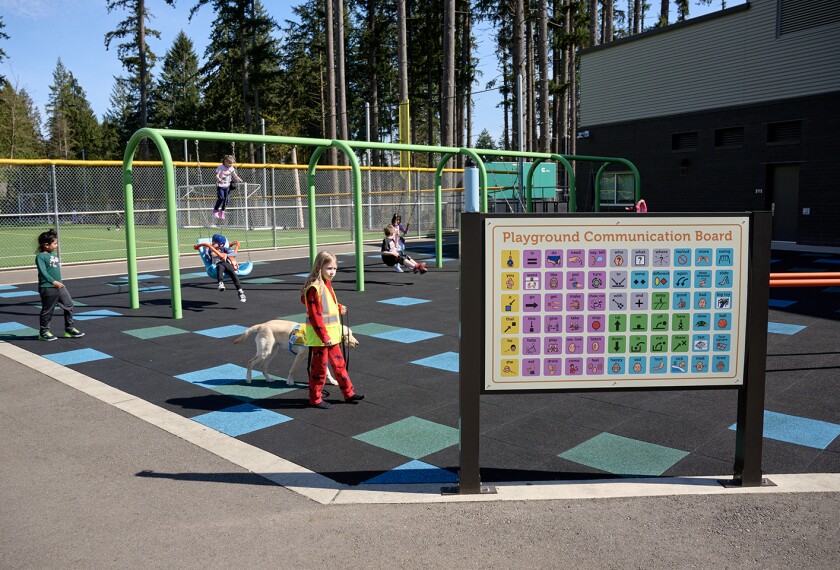Schools are earning mixed reviews from high school students on two key indicators of how well they encourage a sense of belonging.
That’s according to a recent survey by the EdWeek Research Center, which polled a nationally representative sample of 1,056 students in grades 9-12 in February and March.
The survey asked students whether the adults in their school care about their well-being and success and whether students feel like they are accepted and welcomed in their school community.
Although more than half of students answered positively to both questions, there are some concerning trends in the data. A significant proportion of students indicated that they feel disconnected—a troubling sign given the challenges schools are facing with student disengagement and chronic absenteeism.
A majority of students—57 percent—say the adults in their school care about them at least a moderate amount, but 1 in 5 students say the adults care little or not at all about their well-being and success.
Students are much more likely to say they feel accepted and welcomed in their school community overall, with 86 percent agreeing with that statement. That percentage drops slightly for students who are not heterosexual or students who come from low-income families.
Students who feel connected to school are more likely to attend and perform well and less likely to misbehave and feel sad and hopeless. There are even health benefits well into adulthood linked to a strong connection to school as an adolescent.
Schools are using a variety of strategies to bolster a sense of belonging among their students.
Educators at Thomas Kelly College Preparatory have homed in on freshman year as a key time to make sure students have a strong connection to the Chicago high school.
“If you’re a 9th grader, nothing is more important to you than belonging,” Grace Gunderson, a counselor at the 1,700-student school who leads its newly formed freshman success team, said in a recent Education Week special report. “If we can get those kids involved in band, or ‘Hey, I play on the soccer team,’ or ‘Hey, I always eat lunch in Ms. Gunderson’s office,’ now, they have a connection. They have a reason to keep coming to school.”
The 2021 Youth Risk Behavior Survey, which is administered by the U.S. Centers for Disease Control and Prevention, found that students feeling connected to their school was associated with a lower prevalence of several risk factors, such as poor mental health, drug use, and missing school because students felt unsafe. In that survey, 61 percent of high schoolers reported feeling connected to peers and the adults in their schools.
A more recent survey of middle and high school students by YouthTruth, a nonprofit that surveys students and families for school districts, asked specifically about students’ connections to their teachers. The results of that survey aligned closely with the EdWeek Research Center findings.
On both of the survey questions, the EdWeek Research Center’s analysis did not find any statistically significant differences among students by race or gender.
Taken together, the data in the charts below show that while high schools have room for improvement in ensuring that all students feel that they belong and are connected to the adults in their schools, there is a solid foundation to build from.

Data analysis for this article was provided by the EdWeek Research Center. Learn more about the center’s work.










